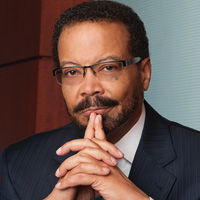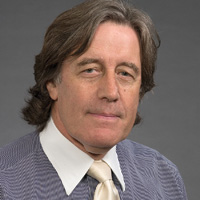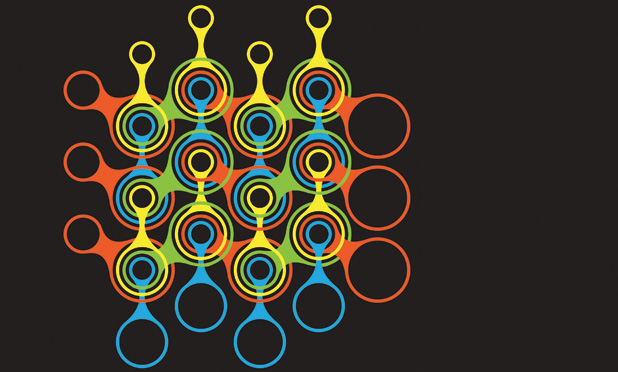Medical researchers increasingly regard tissue engineering and regenerative medicine as potential game changers when it comes to repairing damage from disease or injury and restoring function. To understand the progress made and challenges ahead for this combined field, IEEE Pulse sought out two experts: David F. Williams, former global president (2012–2015) of the Tissue Engineering and Regenerative Medicine International Society, and Roderic I. Pettigrew, founding director of the National Institute of Biomedical Imaging and Bioengineering (NIBIB) at the National Institutes of Health (NIH) [1].
Williams, Ph.D., D.Sc., is currently a professor and director of international affairs at the Wake Forest Institute of Regenerative Medicine in North Carolina as well as a visiting/guest professor at universities in South Africa, China, and Taiwan. As a biomaterials scientist, his research focuses on developing biomaterials for implantable medical devices and tissue engineering templates and, specifically, on experimental and clinical work aimed at understanding biocompatibility phenomena [2], [3]. IEEE Pulse caught up with him while he was in Africa, working on a project to develop minimally invasive technology to treat children in sub-Saharan regions who are dying from the effects of rheumatic heart disease.
Pettigrew, Ph.D., M.D., served as acting chief officer for scientific workforce diversity at the NIH from 2013 to 2014 and has been a professor of radiology at Emory University in Atlanta, Georgia, a professor of bioengineering at the Georgia Institute of Technology, and director of the Emory Center for MR Research at the Emory University School of Medicine. His current research centers on integrated imaging and predictive biomechanical modeling of coronary atherosclerotic disease. At NIBIB, he developed and led programs to train the next generation of researchers skilled in interdisciplinary science; worked with the Quantum Grants Program to solve major healthcare problems; served with a consortium of stakeholders to reverse paralysis due to spinal cord injury; and headed a U.S.–India initiative to invent an unobtrusive, cuffless blood pressure technology that can address the global problem of hypertension. Recently, he has called on immunoengineers to meet the challenge of developing a successful HIV vaccine. IEEE Pulse reached out to Pettigrew through his position at the NIBIB.
IEEE Pulse: How would you describe tissue engineering and regenerative medicine today?

Roderic I. Pettigrew: Tissue engineering and regenerative medicine constitute a promising new field of medical research with the goal of generating or repairing human tissues, which in the coming years could transform clinical medicine. Tissue engineering employs a combination of engineering, biology, and bioactive constructs to improve function by repairing, replacing, or regenerating tissue. This is accomplished through the integration of natural or synthetic scaffolds, cells, and biologically active molecules in concert with mechanical cues in in vitro preparations with subsequent implantation in vivo.
The expanded concept of regenerative medicine includes tissue engineering but also incorporates research on the regeneration of tissue directly in vivo, where the body uses its own systems to repair, replace, or regenerate function in damaged or diseased tissue with the help of exogenous cells, scaffolds, or biological factors. Broadly speaking, both terms refer to generating tissues, components of organs, and whole organs to repair or replace diseased, injured, or malfunctioning tissues.
Regenerative medicine is being driven by multiple factors: a shortage of organs available for transplantation, advances in biomaterials, a greater knowledge of the biological sciences, and a desire to produce functional replacement tissues. Its experimental origins date back to the 1970s with cell seeding of biocompatible materials to generate new tissues. These decidedly goal-oriented investigations became increasingly recognized as a scientific discipline in the late 1980s and early 1990s through the focused efforts of multiple investigators in academia and industry.
Their activities led to the creation of the Tissue Engineering Society, which evolved to include international efforts in tissue engineering and in 2005 became the Tissue Engineering and Regenerative Medicine International Society. Since that time, the terms tissue engineering and regenerative medicine, which have historical and nuanced distinctions, have become largely interchangeable among the broader scientific community.

David F. Williams: There are three main strands of regenerative medicine. The first, usually called cell therapy, involves the use of groups of cells, derived from the patient or elsewhere, which can be injected or otherwise placed at the site of disease or injury in the expectation that they will facilitate the spontaneous regeneration of the required tissue. The second strand is that of gene therapy, where specific genes are inserted into specific cells in order to correct deficiencies in those cells, this enabling certain processes in tissue expression. The third strand is that of tissue engineering, or (as described in the article in Biomaterials [4]) “the creation of new tissue by the deliberate and controlled stimulation of selected target cells through a systematic combination of molecular and mechanical signals.”
Molecular and mechanical signals do not directly imply the use of biomaterials, and tissue engineering may in theory be carried out in the absence of biomaterials. Three factors, however, determine that biomaterials are most likely to be involved in tissue engineering processes. The first is that regenerated tissue usually needs form and structure, and injected cells by themselves are unlikely to provide this without the assistance of biomaterials. Second, molecular signals are not easy to deliver with the appropriate spatial and temporal characteristics; a biomaterial that contains and delivers such signals to the required cells would be very beneficial. Third, mechanical signals may be equally difficult to deliver without the sustained effects of a biomaterial support.
IEEE Pulse: Overall, how has the field evolved over the past five years or so?
Williams: There are two ways of looking at the evolution of tissue engineering and regenerative medicine over the past five to ten years. On the one hand, it has to be said that this field has not yet resulted in the widespread clinical and commercial successes that were initially predicted, and there have been some widely published “problems” in the conduct of clinical research, for example, with tissue-engineered tracheas and clinical trials with induced pluripotent stem cells.
On the other hand, the science base has progressed very well in many areas, and the trajectory from the origins of a new technical field to major success is not too different from other areas, such as the biotechnology and pharmaceutical sectors. The pace of evolution has been curtailed by infrastructure issues more than by the scientific principles, where health economics, regulatory processes, scale-up in bioprocessing/biomanufacturing, difficulties with clinical trial conduct, and ethical issues all play important roles.
Pettigrew: There have been continuous advances in biomaterials and cell scaffolding, the availability of stem and progenitor cells, our understanding of the factors that influence and direct cell fate, methods to promote vascularization of constructs, and technological innovations such as bioreactors and 3-D bioprinting. These have led to increasingly promising developments in the field, ranging from direct printing of skin using autologous cells, neural modulation, and regeneration of functional neuronal circuits in patients with paralysis from spinal injury to humanized organs in mouse models and 3-D organoids- on-a-chip for drug development. Overall, the knowledge of regenerative biology has greatly expanded, and technology development has become more sophisticated.
To date, experimental procedures have been performed to implant supplemental bladders, small arteries, skin grafts, cartilage, and even a trachea into patients. More complex tissues like heart, lung, and liver have been recreated in the lab, but they remain a long-range hope for the future of patient care. Such tissues, however, can be quite useful in research, especially in drug development, where they are expected to reduce the number of animals used for research and, in some instances, provide patient- specific guidance for therapies.
IEEE Pulse: What new technologies in the field have been especially important to tissue engineering research and its clinical application in the United States and internationally?
Pettigrew: The development of sophisticated bioreactors has improved the outlook for clinical translation. These can aid in the in vitro development of new tissues of various types by providing biochemical and physical regulatory signals to cells and encourage them to undergo differentiation. For example, there are bioreactors that can control the electrical pacing of a construct, apply mechanical forces to train it, and incorporate various imaging modalities that permit one to noninvasively monitor tissue growth. We now have bioreactors that allow more opportunities to measure metabolic features like the pH and oxygen consumption of a growing tissue.
Another remarkable development that will help realize translation of research advances is the printing of 3-D tissues tailored to an individual patient’s need. Recent advances have enabled 3-D printing of biocompatible materials, cells, and supporting components into complex 3-D functional living tissues. Experimentally, we have seen the generation and transplantation of several tissues, including multilayered skin, bone, vascular grafts, tracheal splints, heart tissue, and cartilaginous structures. This is an evolving area of important research for practical delivery on the promise of regenerative medicine.
Williams: Underlying technologies in tissue engineering concern both cell sourcing/handling and engineering—mechanical, materials, processing. A great deal has been learned in the last few years about stem cell biology and the needs of target cells with respect to their ability to generate new tissue. This needs to be enhanced by a greater understanding of the processes that lead to vascularization and innervation in the regenerating tissue (in sufficiently large volumes) that allow for functionality of the resulting tissue. On the engineering side, there have been some important developments in the synthesis of biomaterials and the manufacturing of constructs, through bioprinting and other biofabrication processes, but these are probably lagging some way behind the biological developments.
IEEE Pulse: What is still needed to advance the field, and are such advancements in the works?
Pettigrew: The science behind the tissue engineering and regenerative medicine fields has been steadily advancing through a greater understanding of cells, biological signals, and the interactive role of the extracellular matrix, and this has resulted in significant advances in growing tissues in vitro. What is needed now is a focus on translation— what it takes to make reproducible constructs that can be implanted in the body and perform effectively for years or for the lifetime of the recipient. To reach large patient populations, we need to scale up individual units generated in vitro and make them reproducible and broadly available. The critical first step of feasibility has been demonstrated in humans for several applications, but the pathway going forward is the development of translational technology.
Industry takes discovery and turns it into development. Industry also understands well that the remaining challenges are not only technical. Solutions must be developed in the context of a viable business model, involving value-driven engineering, cost considerations, and sometimes additional science and discovery.
Williams: There are two important points to make. The first is very specific and relates to the nature of the biomaterials used in the construction of so-called scaffolds or templates. The main problem has been the perceived need to use biomaterials (typically synthetic polymers) that have prior regulatory approval for medical devices, since it has been thought that the whole development program would be speeded up. This is not the case, since these polymers generally cannot fulfill the basic requirements of facilitating mechanical and molecular signaling. Much better understanding of these mechanisms is needed. This is not a funding issue, but one of challenging the status quo, which is proving very difficult.
The second point refers to the infrastructure. Tissue engineering is by definition both multi- and interdisciplinary. We still have a long way to go to see this as a systems engineering phenomenon, and this does require much more imaginative collaboration.
IEEE Pulse: Which up-and-coming technologies are especially interesting to you?
Williams: In light of (my previous) comments, I personally see the integration of “new” biomaterials science into the biology of functional tissue regeneration as the key.
Pettigrew: NIBIB introduced its Quantum Grants Program a decade ago to solve major medical or healthcare problems. These projects and other efforts by NIBIB include the development of a curative treatment for type I diabetes through regeneration of insulin-producing islet cells, the engineering of a functional kidney to replace hemodialysis and restore the biological functions of the kidney, a reparative treatment for acute brain injury from stroke or trauma, 3-D organoids-on-a-chip for drug development, and reversing paralysis from acute injury to the nervous system.
IEEE Pulse: Looking forward, how do you see tissue engineering impacting the clinic in the next five to ten years?
Williams: Let us take the ten-year horizon. We will not have any major impact if tissue engineering focuses on areas where there are already some effective solutions to medical problems, for example, by medical devices or drugs. The field has to focus on unmet clinical need, especially in areas of neurodegeneration, such as Parkinson’s and Alzheimer’s; sensory organ deficits, including macular degeneration; major trauma, as in spinal cord injury; diabetes; and in the quest for alternatives to organ transplantation in view of the dearth of organ donors. Only then will the public and the politicians be convinced that we can have a major impact. I think that the science/engineering base is capable of delivering this.
Pettigrew: The field is getting closer to clinical implementation of some advances. For example, a recent approach to skin regeneration in burn victims may prove to be viable for widespread distribution and use. We are also already using extracellular matrix scaffolds—pieces of tissue in which cells have been removed leaving the structural tissues—for some surgical repair. The 3-D matrix of molecules—inclusive of adhesion molecules, transforming factors, and growth factors— has now been commercially available for several years. A derivative of the same process has resulted in a vascular graft that may soon be available for clinical use.
Overall, I think it’s worth noting that several basic tools needed for more generalized clinical impact are maturing. Our understanding of stem cells and stem cell pluripotency, the emergence of cell manufacturing technologies, the progression in effective biomaterials, the greater insights into the role of the 3-D matrix and mechanotransduction in cell fate and functionality, and sophisticated 3-D bioprinting technology for organs are all tremendous developments critical for eventual general clinical success. These advances have occurred within just the last decade and give us hope for more accelerated progress in the coming decade.
The lens of history provides a sharp view on the success of technology prognosticators. The next disruptive technology may well be around the corner, and innovations that will flow from this we cannot even imagine. When these innovations come— and, as history has also taught us, they surely will—these will propel us into a new era of clinical medicine and health care where tissue and organ failure can be repaired.
References
- National Institute of Biomedical Imaging and Bioengineering. [Online].
- D. F. Williams, “On the mechanisms of biocompatibility,” Biomaterials, vol. 29, no. 20, pp. 2941–2953, 2008.
- D. F. Williams, “Biocompatibility pathways: Biomaterials-induced sterile inflammation, mechanotransduction and principles of biocompatibility control,” ACS Biomaterials Sci. and Eng., 2017, vol. 3, no. 1, pp. 2–35.
- D. F. Williams, “On the nature of biomaterials,” Biomaterials, vol. 30, no. 30, pp. 5897–5909, Oct. 2009.



